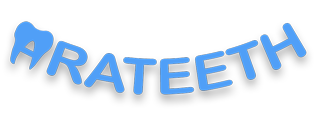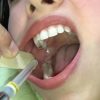اختلالات مفصل گیجگاهی در دندانپزشکی
مقدمه
اختلالات مفصل گیجگاهی (Temporomandibular Joint Disorders یا TMD) شامل مجموعهای از ناهنجاریها و مشکلاتی هستند که مفصل گیجگاهی-فکی (Temporomandibular Joint یا TMJ) و عضلات اطراف آن را تحت تأثیر قرار میدهند. این اختلالات میتوانند منجر به درد مزمن، دشواری در حرکت فک، و صداهای غیرطبیعی هنگام باز و بسته کردن دهان شوند. TMD به طور کلی میتواند کیفیت زندگی بیماران را به شدت کاهش دهد.
آناتومی مفصل گیجگاهی-فکی
مفصل گیجگاهی-فکی یکی از پیچیدهترین و متحرکترین مفاصل بدن انسان است که شامل اجزاء زیر میباشد:
- سر کندیل (Condyle Head): انتهای فوقانی فک پایین که درون حفره مفصلی قرار میگیرد.
- حفره گلنوئید (Glenoid Fossa): بخشی از استخوان گیجگاهی که سر کندیل در آن حرکت میکند.
- دیسک مفصلی (Articular Disc): ساختاری از بافت فیبری که بین سر کندیل و حفره گلنوئید قرار دارد و به عنوان یک ضربهگیر عمل میکند.
- کپسول مفصلی (Joint Capsule): بافتی که اطراف مفصل را احاطه کرده و حاوی مایع سینوویال است.
- مایع سینوویال (Synovial Fluid): مایعی لغزنده که به کاهش اصطکاک و تغذیه مفصل کمک میکند.
- عضلات ماستر (Masseter) و تمپورالیس (Temporalis): از عضلات اصلی مسئول حرکت فک هستند.
علائم و نشانهها
TMD میتواند با طیف وسیعی از علائم همراه باشد:
- درد اوروفاسیال (Orofacial Pain): درد در ناحیه فک، صورت، گردن و شانهها. این درد ممکن است به صورت مزمن یا حاد باشد.
- اختلال در حرکات فکی (Mandibular Movement Disorders): دشواری در باز و بسته کردن دهان، حرکت فک به طرفین و قفل شدن فک.
- صداهای مفصلی (Joint Sounds): صداهای کلیک، پاپ یا سنگخوردگی هنگام حرکت فک.
- هیپرموبیلیتی (Hypermobility): افزایش بیش از حد دامنه حرکت فک.
- اختلالات شنوایی (Auditory Symptoms): درد گوش، وزوز گوش (Tinnitus)، و گاهی کاهش شنوایی.
علل و عوامل مؤثر
دلایل مختلفی برای بروز TMD وجود دارد که شامل موارد زیر است:
- برکسیزم (Bruxism): فشار و سایش دندانها به دلیل استرس یا ناهنجاریهای عصبی.
- آسیبهای تروماتیک (Traumatic Injuries): ضربههای مستقیم به فک یا صورت که منجر به آسیب مفصل میشوند.
- آرتروز دژنراتیو (Degenerative Arthritis): تخریب غضروف مفصلی که معمولاً در سنین بالا رخ میدهد.
- نارسایی عملکردی دیسک (Disc Displacement): جابجایی دیسک مفصلی که میتواند منجر به درد و صداهای غیرطبیعی شود.
- عوامل ژنتیکی و ساختاری (Genetic and Structural Factors): مانند ناهنجاریهای مادرزادی و ویژگیهای ارثی.
تشخیص
تشخیص TMD نیازمند بررسی جامع توسط دندانپزشک و شامل مراحل زیر است:
- بررسی تاریخچه پزشکی (Medical History): ارزیابی سابقه درد، صداها و مشکلات حرکتی فک.
- معاینه فیزیکی (Physical Examination): لمس و مشاهده ناحیه فک، بررسی صداها و حرکات مفصل.
- تکنیکهای تصویربرداری (Imaging Techniques): رادیوگرافی پانورامیک، MRI (تصویربرداری تشدید مغناطیسی)، و سیتیاسکن (CT Scan) برای بررسی دقیقتر ساختارهای مفصلی.
درمان
روشهای درمانی TMD به دو دسته غیرجراحی و جراحی تقسیم میشوند:
- درمانهای غیرجراحی (Non-Surgical Treatments):
- اسپلینتهای دهانی (Oral Splints یا Occlusal Splints): دستگاههایی که برای کاهش فشار روی مفصل و جلوگیری از سایش دندانها استفاده میشوند.
- فیزیوتراپی (Physical Therapy): شامل تمرینات تقویتی و کششی عضلات فک.
- داروها (Medications): شامل داروهای ضد التهاب غیراستروئیدی (NSAIDs)، شلکنندههای عضلانی (Muscle Relaxants) و در برخی موارد ضد افسردگیها (Antidepressants).
- تکنیکهای مدیریت استرس (Stress Management Techniques): مانند مشاوره روانشناسی و روشهای آرامشبخش.
- درمانهای جراحی (Surgical Treatments):
- آرتروسنتز (Arthrocentesis): شستشوی مفصل برای کاهش التهاب و درد.
- آرتروسکوپی (Arthroscopy): جراحی کمتهاجمی برای بررسی و ترمیم مشکلات داخلی مفصل.
- جراحی باز (Open Joint Surgery): در موارد شدید که نیاز به تعمیرات گستردهتر مفصل باشد.
نتیجهگیری
اختلالات مفصل گیجگاهی میتوانند تأثیرات منفی زیادی بر کیفیت زندگی بیماران داشته باشند. با تشخیص دقیق و درمان مناسب، میتوان به کاهش علائم و بهبود عملکرد فک کمک کرد.
منابع
- Okeson, J. P. (2019). Management of Temporomandibular Disorders and Occlusion. Elsevier Health Sciences.
- de Leeuw, R., & Klasser, G. D. (2018). Orofacial Pain: Guidelines for Assessment, Diagnosis, and Management. Quintessence Publishing.
Temporomandibular Joint Disorders in Dentistry
Introduction
Temporomandibular Joint Disorders (TMD) encompass a variety of problems affecting the temporomandibular joint (TMJ) and its surrounding muscles. These disorders can manifest as chronic pain, difficulty in jaw movement, and abnormal sounds during mouth opening and closing. TMD significantly impacts the quality of life for affected individuals.
Anatomy of the Temporomandibular Joint
The TMJ is one of the most complex and mobile joints in the human body, comprising the following components:
- Condyle Head: The upper end of the mandible that fits into the articular socket.
- Glenoid Fossa: Part of the temporal bone that accommodates the condyle head.
- Articular Disc: A fibrocartilaginous structure between the condyle and the glenoid fossa acting as a shock absorber.
- Joint Capsule: The fibrous tissue surrounding the joint, containing synovial fluid.
- Synovial Fluid: A lubricating fluid that reduces friction and nourishes the joint.
- Masseter and Temporalis Muscles: Primary muscles responsible for jaw movement.
Symptoms and Signs
TMD can present with a wide range of symptoms, including:
- Orofacial Pain: Pain in the jaw, face, neck, and shoulders, which can be chronic or acute.
- Mandibular Movement Disorders: Difficulty in opening and closing the mouth, lateral jaw movements, and jaw locking.
- Joint Sounds: Clicking, popping, or grating sounds during jaw movement.
- Hypermobility: Excessive range of jaw movement.
- Auditory Symptoms: Ear pain, tinnitus, and sometimes hearing loss.
Causes and Contributing Factors
Various factors can lead to TMD, including:
- Bruxism: Teeth grinding and clenching due to stress or neurological disorders.
- Traumatic Injuries: Direct impact to the jaw or face causing joint damage.
- Degenerative Arthritis: Deterioration of the joint cartilage, commonly in older adults.
- Disc Displacement: Misalignment of the articular disc causing pain and abnormal sounds.
- Genetic and Structural Factors: Congenital abnormalities and hereditary traits.
Diagnosis
Diagnosing TMD involves a comprehensive evaluation by a dentist, including:
- Medical History: Assessing the history of pain, sounds, and jaw movement issues.
- Physical Examination: Palpation and observation of the jaw area, checking for sounds and joint movements.
- Imaging Techniques: Panoramic radiography, MRI (Magnetic Resonance Imaging), and CT (Computed Tomography) scans for detailed examination of joint structures.
Treatment
TMD treatment methods are categorized into non-surgical and surgical approaches:
- Non-Surgical Treatments:
- Oral Splints or Occlusal Splints: Devices used to reduce joint pressure and prevent teeth grinding.
- Physical Therapy: Includes strengthening and stretching exercises for jaw muscles.
- Medications: NSAIDs (Non-Steroidal Anti-Inflammatory Drugs), muscle relaxants, and sometimes antidepressants.
- Stress Management Techniques: Psychological counseling and relaxation methods.
- Surgical Treatments:
- Arthrocentesis: Joint lavage to reduce inflammation and pain.
- Arthroscopy: Minimally invasive surgery to diagnose and repair internal joint issues.
- Open Joint Surgery: In severe cases, extensive joint repairs are required.
Conclusion
Temporomandibular joint disorders can significantly impact the quality of life for patients. Accurate diagnosis and appropriate treatment can help alleviate symptoms and improve jaw function.
References
- Okeson, J. P. (2019). Management of Temporomandibular Disorders and Occlusion. Elsevier Health Sciences.
- de Leeuw, R., & Klasser, G. D. (2018). Orofacial Pain: Guidelines for Assessment, Diagnosis, and Management. Quintessence Publishing.
 آراتیس | آراتیس تامین کننده مواد دندانپزشکی و تجهیزات دندانپزشکی
آراتیس | آراتیس تامین کننده مواد دندانپزشکی و تجهیزات دندانپزشکی

